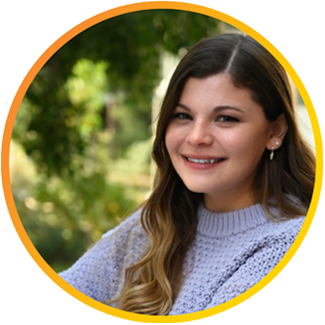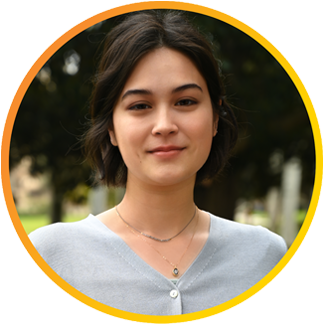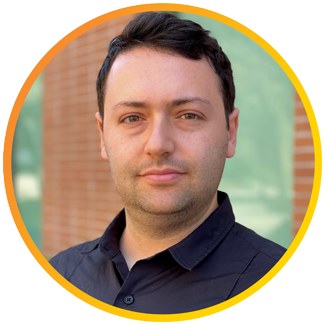In honor of Earth Day, the School of Humanities invited graduate students and postdoctoral scholars working in the field of environmental humanities to reflect on the following:
Even while scientists debate the exact term for our times, we are reckoning with a changing climate that has far-reaching implications for life as we know it – and would like to imagine it. Much of this news is disturbing and alarming. Just last week, the University of California launched a class, targeted to undergrads, around the topic of climate anxiety.
How do you make sense of what you know and see, while not giving in to despair? Drawing upon your research, your work, the communities with whom you engage – what are some of the avenues of thought and engagement you pursue, and why? How has your work in the general topic of environmental humanities shaped your perspective on the future, and our part in it?
What follows are their responses, and suggested readings/viewings to pursue if you’re interested in learning more.
Megan Cole
In the writing courses I teach here at UCI, my students and I explore narratives of climate change together, often asking ourselves how we can most effectively approach the compounding environmental crises we are living through: with optimism, pessimism or some delicate alchemy of both? I’m not sure that we’ve ever settled on a definitive answer, but I’ve come personally to believe that even if it’s too late now to halt or reverse the course of climate change – a grim prognosis that has become increasingly convincing to scientists and activists alike – it’s not too late to lessen its impacts. We can have realistic expectations about our collective future, but we also can and should still work to make that future a more sustainable and equitable one through community organizing, knowledge production and direct political action.
While historians and other humanists have shown us that the roots of climate change stretch across centuries, they also show us that we are not devoid of the agency to critically examine and change these ideologies and structures. In that agency, I hope, lies the antidote to climate anxiety. We may not ever be able to return to a pre-Anthropocene world, but if we act quickly and collectively enough, we might still avoid total ecological collapse. Then, it will be up to us to decide how to remake the world in the wake of the crises we have inherited and weathered.

Megan Cole is an English Ph.D. Candidate whose research interests include ecocriticism, political economy, energy and infrastructure studies, and the environmental humanities. Her current book project examines representations of fossil fuels and ecological degradation in early-twentieth-century U.S. fiction.
Sophie Mariko Wheeler
For me, engaging with literature and music in my research lets me reflect on how these writers live with climate change. Many of the writers I work with have experienced some sort of environmental catastrophe, such as the dumping of methyl mercury in Minamata Bay, radiation in the aftermath of the Fukushima Dai'ichi Nuclear Meltdown, or the devastation of indigenous lands due to settler-colonialism. At a certain point, it feels as if there is no way to make sense of all the tragedy occurring all around. However, these very writers remind me that whether we like it or not, life will continue. This affirmation that communities and cultures are present even after devastating loss teaches us that hope in the time of the Anthropocene is a radical act.

Sophie Mariko Wheeler is a third year Ph.D. student in East Asian Studies whose research focuses on modern Japanese literature, environmental humanities and Indigeneity & race in Japan. Their current project focuses on writing and aurality within Indigenous and feminist works in Japan. You can reach them at smwheele@uci.edu.
Zachary Korol Gold
Reflecting on climate change and its environmental crises amounts to reflecting on the world – how it is represented, imagined and thought. I view this as historically specific, and find the origins of our contemporary crises in the models of the Earth developed in the 1960s and 1970s. Contemporary art, in my view, has the power to reveal those assumptions structuring thought.
The world was first imaged in 1967 when a NASA weather satellite scanned the planet, a picture reproduced as the cover of the popular 1968 Whole Earth Catalog distributed by Stewart Brand that would catalyze a generation of back-to-the-land hippies and Silicon Valley engineers. At the same time, an existential anxiety around the Earth’s finitude arose, a response to the black void of space surrounding our so-called “blue marble.” In 1972, a group of scholars developed the “World3” program, a computer simulation that sought to model the entire globe by accounting for all interactions between populations, industrial production, agriculture and ecosystems. Cementing an emerging climate anxiety, every time they ran the simulation, the system collapsed.
In the past 50 years this anxiety, stemming from an awareness of human effects in the global climate, has persisted. As early as the late 1960s, Ecological Art pioneers like Helen and Newton Harrisons began lifelong art practices to both remediate local environments and spread knowledge of an impending crisis alongside the efforts of environmental activists. Such efforts, however, have not altered our course. What I see as lacking is an account of a more fundamental shift in thought toward a belief in the simulatability and modelability of ecologies and the environment. Art has the power to expose and oppose the historical mechanisms structuring sense and thought, the contemporary era of climate.

Zachary Korol Gold is a curator and writer living in Los Angeles researching ecological aesthetics in contemporary art. He is a Ph.D. Candidate in Visual Studies at the University of California, Irvine where he is writing his dissertation “Reconfiguring Nature, Technology, and Sense: Pierre Huyghe’s Situated Artworks.”
Marianna Davison
While the enormity of the climate crisis can feel overwhelming, I find hope in the practices and philosophies of Indigenous and community-led land stewardship. In my academic and community-based endeavors, I center the crucial work of Indigenous land rematriation and cultural reclamation, from the restoration of native plants to the broader Land Back movement confronting the root causes of environmental and climate injustice. These efforts not only provide a counter-narrative to climate despair but also offer actionable pathways toward the ecological repair needed to confront the increasing threats of wildfires, floods and other climate-induced disasters.
My Ph.D. in Visual Studies at UCI examined the art and design of public green spaces in Seattle, Washington, focusing on projects spanning the twentieth century in order to trace colonial and anti-colonial urban environmental histories embedded within the city’s constructed landscapes. My place-based research led to an understanding of the climate precarity we experience today as deeply rooted in historic and ongoing practices of colonial land expropriation, capitalist extraction, and the decimation of ecological systems resulting from the removal and dispossession of Indigenous peoples from their land and traditional lifeways. Learning from communities engaging in the Land Back movement, which emphasizes the return of stolen lands, alongside practices of rematriation focusing on the reimplementation of traditional stewardship and land management practices, it is clear such approaches are necessary to forge equitable solutions to environmental crises.
In my current postdoctoral position with the Wildland Urban Interface Climate Action Network (WUICAN) at UCI, I’ve joined a multidisciplinary team of community groups, academic partners and Tribal leaders working to develop new models of climate co-governance that center community and Indigenous-led decisions and stewardship practices. My position with WUICAN supports the facilitation of arts and education initiatives, which are crucial for communicating the urgent need for collaborative, regionally-specific responses to climate injustice.

Marianna Davison, Ph.D., is a Postdoctoral Scholar in K-12 Climate Justice, Arts, and Communication with the Wildland Urban Interface Climate Action Network (WUICAN). In her prior postdoctoral position, Marianna served as the Academic Coordinator for UCI’s 2022-23 “Living with Wildfire” Initiative. She worked with local first responders, artists, and land stewards to co-design oral history and public art projects, workshops, and education modules exploring stewardship practices and cultural understandings of wildfire in Southern California. Marianna earned her Ph.D. in Visual Studies at UCI, specializing in the environmental history of nineteenth and twentieth-century American art, visual culture, and landscape design, and was a 2020-21 Junior Fellow in Garden and Landscape Studies at Dumbarton Oaks.
Curious what these scholars recommend to read and watch? Discover more in our Earth Day 2024 bibliography.
